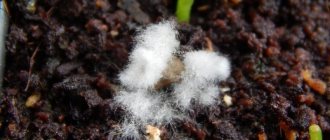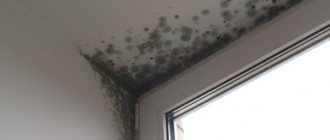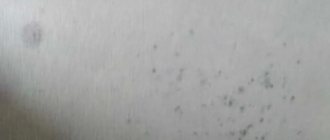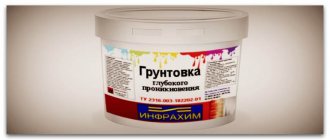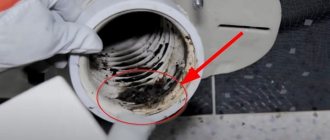Your dishwasher has been pleasing you for a long time with its impeccable cleaning quality, when suddenly, after yet another use, you notice that there is a strange white coating, streaks, stains left on the dishes... This is very noticeable on pans with a non-stick (Teflon) coating.
Perhaps you found the same coating on the walls of the dishwasher itself. What is this? Malfunction? Or did you do something wrong yourself? Let's figure it out.
Irregular care
The cleanliness of equipment significantly affects the quality of work and can even cause breakdowns. All dishwasher owners need to remember a simple rule: “a clean dishwasher means perfectly washed dishes.”
Properly working equipment suddenly stopped coping with its task even during long intensive cycles. The result is poorly washed plates and cutlery with stains. Sediment and white residue are also found in the dishwasher itself when inspecting the internal compartment. This happens if preventive cleaning has not been carried out during the entire period of operation.
During prolonged use without cleaning the internal drains and spray nozzles, limescale, food particles and grease can accumulate on the surface and clog the filters. Due to deposits, the nozzle holes become smaller in size and cannot discharge water in the required volume. This results in poor cleaning and white residue on the dishes.
Often this problem is solved on your own by cleaning all dirty filters and removing deposits manually or using a cleaning program. Carefully inspect the filters inside the dishwasher; they may need to be removed and washed under running water with a grease remover. Limescale can also be removed manually using a soft sponge and a small amount of limescale remover.
Most dishwashers have a cleaning program for removing plaque and grease. You can use special products or regular citric acid. It is poured into the detergent powder compartment, then a cleaning program or simply an intensive mode at high temperatures is set.
Washing machine
To clean the inside of your washer, mix baking soda and water in a small bowl to form a paste. Transfer the paste into a container for powder, and pour a glass of vinegar into the drum of the machine. Set the washing temperature to the highest, close the drum door and start a full wash program. When the wash cycle ends, you need to wipe the inside of the drum with a sponge or paper towel.
Wipe the rubber band and drum doors with a cloth, removing everything that has accumulated over time. If there is mold, you can treat everything with vinegar or bleach, and then rinse everything with clean water.
Wash the powder tray with baking soda or another cleaning agent. You can scrub everything with an old toothbrush. At the bottom of the washer there is a pump filter that protects against blockages. It needs to be cleaned at least once every six months, otherwise the water will not drain well.
Quality and dosage of detergents
If everything is in order with the internal elements - they are clean and there are no traces of scale, then the reason should be looked for elsewhere.
One of the most common reasons why a white residue remains in the dishwasher is an error in the dosage and selection of special household chemicals for washing dishes.
When using multi-component capsules on short washing cycles, it happens that they simply do not have time to dissolve completely, and the remaining product settles on the surface of the dishes and causes white stains to appear. Another option is low-quality chemistry.
Advice! If, after using new capsules, a problem with a white coating appears, try changing the product and stop using the previous one. Most likely, it is not suitable for your equipment.
Perhaps the reason is simpler than it seems. The product has been added incorrectly to the compartment (there may be too much of it, the lid is not tightly closed, so the product can get into the chamber with the dishes), the compartments for powder and rinse aid are mixed up. As a result, a white coating appears after the end of the cycle and the dishes are not washed properly.
To solve the problem, carefully study the operating instructions for your PMM, which indicates the recommended amount of chemicals and which compartments are intended for a particular type. Be sure to fill according to manufacturer's specifications and seal lids tightly.
Try to choose proven brands of “3 in 1” capsules, do not use them for short programs. Only by trial and error can you find your ideal remedy.
Advice! Do not resort to using liquids for manual dishwashing or traditional methods such as vinegar and soda; such experiments usually end in expensive equipment repairs.
How to remove?
To remove an unpleasant aroma, it is necessary to determine the provoking factor. Depending on this, the cleaning method will depend. If you suspect an electrical problem, you should contact a professional. It is prohibited to use the device after this; it can be life-threatening. This problem can be identified by the smell of burning.
If the smell is putrid in nature, we are talking about rubbish problems that can be easily eliminated at home. To do this, you need to choose the right method and means. But you should know that abrasive substances negatively affect the metal parts of the dishwasher, so their use is not recommended. Prohibited substances include:
- washing powder;
- chlorine-based cleaning products;
- substances that can corrode rubber materials.
Cleaning the inner container of the dishwasher
A coating of small food particles and fat remains on the walls of the machine. When they accumulate, they begin to smell bad. To prevent this problem from arising, it is necessary to thoroughly wipe the walls and dry them after each session. To eliminate the unpleasant odor that appears, you need to:
Before the procedure, all internal structures must be removed.
- clean the container from grates and shelves;
- wipe the walls with detergent, repeat the procedure with the internal parts, but in the basin;
- Initially, wipe off the deposits between the door seals and then rinse them with water.
Cleaning the drain filter
This is the place where the most dirt accumulates, so most often it is the cause of the unpleasant odor. To ensure that your dishwasher lasts a long time and there are no odor problems, you should thoroughly clean the dishes. But if such a problem occurs, you can fix it in the following way:
- Remove the protective mesh at the bottom of the device and remove the filter from there.
- Clean with boiling water and soap, using a brush.
- Dry and wipe with a cotton towel, only after that the filter is placed in place.
Before removing parts, you must carefully study the instructions for the electrical appliance.
Cleaning the drain hose
The smell of rot appears if water collects in it after washing dishes. Additionally, dirt can also accumulate here after washing. A day is enough for the leftovers to begin to develop aromas. To clean the drain hose and thus get rid of the unpleasant odor, you need to disconnect it from the device and drain the water into the sink. Then wipe the walls using a long wire. To disinfect, it is better to rinse the hose with hot water and cleaning agent.
Cleaning must be done carefully; thin walls can be easily damaged by wire or abrasive substances.
Household chemicals
On the shelves of hardware stores you can find a large number of products designed for dishwashers. They carefully remove plaque without harming the surface and leaving no marks on the metal. The powder, tablet or gel is poured into the detergent container and the empty device is turned on. After cleaning, you need to rinse the machine 2-3 times and only then wash the dishes there. When choosing a product, it is better to focus on what the manufacturer recommends.
Using improvised means
Store-bought cleaning products are expensive, so many housewives prefer traditional recipes. They have a number of advantages: they are inexpensive, can be found in every home, and carefully eliminate any odor. At the same time, the influence of chemicals is minimized, so this type of washing is safe for people. The main thing is not to exceed the norm and not to clean too often.
Table vinegar
The substance not only removes unpleasant odors, but also fights scale on the heating parts of the machine. The cleaning procedure follows the following scheme:
- Fill a glass with vinegar and place it in the reading compartment.
- Turn on the dishwasher.
- After switching off, open for 30 minutes.
Baking soda
You can fight greasy deposits and unpleasant odors inside the dishwasher with cheap products. Baking soda is available in every kitchen; to effectively eliminate the problem, 100 grams of the substance is enough. It is poured onto the bottom of the machine and the normal washing mode is turned on. This cleaning has a number of advantages: the surface becomes clean, it shines, in addition, soda has a disinfecting effect. There is no need to rinse the dishwasher after the procedure; you can immediately load dirty dishes. For prevention, you can wash your parting with baking soda once a month.
Quality and dosage of rinse aid
Incorrect dosage or inadequate quality of this chemistry can affect the washing result. As a result, stains on cutlery and dishes.
A full cycle dishwasher uses three chemical components to achieve perfect cleanliness and shine of dishes: powder, rinse aid and regenerating salt. If you use each product separately, and not complex capsules, then the presence of rainbow stains or a white coating on the dishes (especially noticeable on transparent ones) indicates that something is wrong with the rinse aid.
It often happens that a housewife, busy with household chores, mistakenly pours rinse aid into the compartment, for example, for powder. As a result, the product is used from the very beginning of the cycle and is poorly washed off the walls of glasses and plates.
If the compartment lid is not closed tightly enough, rinse aid may leak into the compartment itself and leave stains. The same situation occurs if the product is poured in excess.
Concentrated rinse aid must be used in smaller quantities than regular rinse aid. Try checking the dosages in the dishwasher instructions and on the air conditioner label.
Cheap or new chemistry may not be suitable specifically for your case. If you recently changed the brand of rinse aid, there is a high probability that stains on the dishes were caused by it.
Reasons for the formation of plaque on dishes
White flakes and stains in the dishwasher are limescale. In a centralized water supply, the water is hard and contains impurities of salts such as calcium, magnesium, etc. Owners of an autonomous water supply system are not immune from this problem, especially if water is drawn from cracks in limestone rocks.
When heated, these substances transform into a white precipitate called scale. This is the most common cause of whitish spots on washed dishes.
A plaque of similar composition forms inside the kettle. To improve the situation, manufacturers have included a special module in the design of dishwashers - an ion exchange system.
This is a container filled with a resinous filler, into which regenerating salt is added. When the water entering the machine passes through an ion exchanger, chloride ions neutralize metal salts and soften the water.
The presence of impurities that affect the hardness parameters of tap water can be determined visually. If water poured into a transparent vessel has a “rusty” tint, it means that it has undergone poor-quality filtration. Consequently, excess calcium and magnesium from the water is also not removed
The lack of salt or its insufficient amount leads to the appearance of plaque. But the reasons for the lack of this remedy need to be understood.
The appearance of plaque may indicate that the settings have gone wrong, the salt has simply run out, that this particular product is not suitable for local water, etc. But it also happens that plaque becomes a sign of serious damage.
If the hardness control is not set correctly, insufficient salt will flow into the machine. Manufacturers often equip the device with test strips, which allow you to correctly determine the level of hardness in order to set the necessary settings.
The white coating that appears on the surface of dishes after washing is scale, limescale deposits that form when hard water is heated.
If you don’t have such strips, you can ask your local water utility for help, order a water test from a well, or simply buy a set of such strips. If the quality of dishwashing is unsatisfactory, you need to correct the situation immediately. Otherwise, it will only get worse, and you will have to call a specialist and pay for expensive repairs.
Hard water
A similar reason for the appearance of white limescale is too hard water. For high-quality washing of dishes, you need water of sufficient softness, which can be achieved using a special system with regenerating salt. Before the first start, you need to adjust the hardness parameters using test strips, set the value, and fill the compartment with salt. But if the dishwasher leaves a white residue, the parameters may have gone wrong or there are some problems with salt intake.
Incorrect settings or incorrect settings can identify the degree of water hardness incorrectly, thereby softening it insufficiently. There is another reason: the salt has run out or has completely entered the washing compartment through a loosely closed container lid.
In different regions, the degree of water hardness is different, even in city areas it may differ. For proper operation of the dishwasher, it is important to know the exact value of this parameter in your water supply network. Typically, manufacturers include special test strips in the kit, with which you can obtain the value and correctly configure the PMM. Check if the parameters match; it happens that due to incorrect settings, the machine does not soften the water enough.
You also need to monitor the amount of regenerating salt. Its absence provokes plaque on the internal elements of the PMM and utensils. It is important that the product does not fall into the compartment with the dishes, but is in a special container with a tightly closed lid.
Attention! There should always be salt in the dishwasher! If you just filled it in, you can run the equipment “idle” on any program immediately before loading the dishes.
Technical problems and violation of operating rules
Careless handling or use of the dishwasher for other purposes will inevitably lead to problems and subsequent failure. But the likelihood of white marks appearing on dishes due to a simple breakdown of some element is also high. Let's look at the most common reasons.
Damage to the water hardness sensor
In premium class dishwashers, the manufacturer installs a water hardness sensor. This function is very convenient: the equipment itself determines the quality of the incoming liquid and consumes the right amount of salt automatically. If after each use of the dishwasher you notice white marks on the walls of the dishes, this may be a sign of a breakdown of this device.
The sensor monitors the consumption of regenerating salt. In the event of a breakdown of this element, salt is taken in a smaller quantity than necessary. Scale, which results from heating hard water, settles on the walls and dishes, causing white spots and stains.
Unfortunately, it is difficult to fix this breakdown on your own. A service center or a competent technician will be able to replace the sensor with a new one.
Failure of the ion exchanger
An ion exchanger is a container with resin that allows you to remove magnesium and calcium ions from the incoming water flow at the molecular level. The result is that the water becomes softer, and scale and white deposits do not appear in the dishwasher. In order for the system to work properly, a special regenerating salt is needed, which is poured into the compartment and allows the resin to be used in the ion exchanger again.
Such an important unit rarely breaks, but if a white residue remains on the dishes, and you are confident in the quality of the chemicals used and the cleanliness of the internal elements, then perhaps the ion exchanger is faulty.
Low pressure in pipes
Try washing dishes with your hands under a thin stream of water! You'll spend more time than usual, and detergent residue will be harder to remove from dishes and glassware. As a result, they are covered in streaks and a white soapy coating.
Now imagine that instead of the required pressure, a thin stream of water is supplied to the dishwasher. In this case, you should not expect high-quality washing.
Start the equipment and watch how it takes in water. Longer than usual? You can find out the quality of the pressure by simply unscrewing the tap all the way. If the water supply is poor, then the problem of why the dishwasher leaves white spots on the dishes lies precisely in this.
In private homes, you can solve the problem by installing a water pump, but if your house is connected to a central network, you will have to wait for the problem to be resolved (perhaps they are troubleshooting the line) or deal with the supplier.
Prevention measures
The best solution to the problem of plaque is prevention. In order to ensure that the quality of the washed dishes, as well as the operation of kitchen appliances, is enjoyable, it is important to follow simple rules:
- monitor the cleanliness and technical condition of the dishwasher;
- before starting the PMM, load chemicals in precise dosages into the appropriate compartments;
- use high-quality, proven products;
- correctly arrange dishes in the dishwasher and do not load them more than the permissible amount;
- choose a program depending on the type of pollution;
- Before loading into the PMM, always clean the dishes from food residues, since clogged filters impair the outflow of water, which affects the quality of washing.
